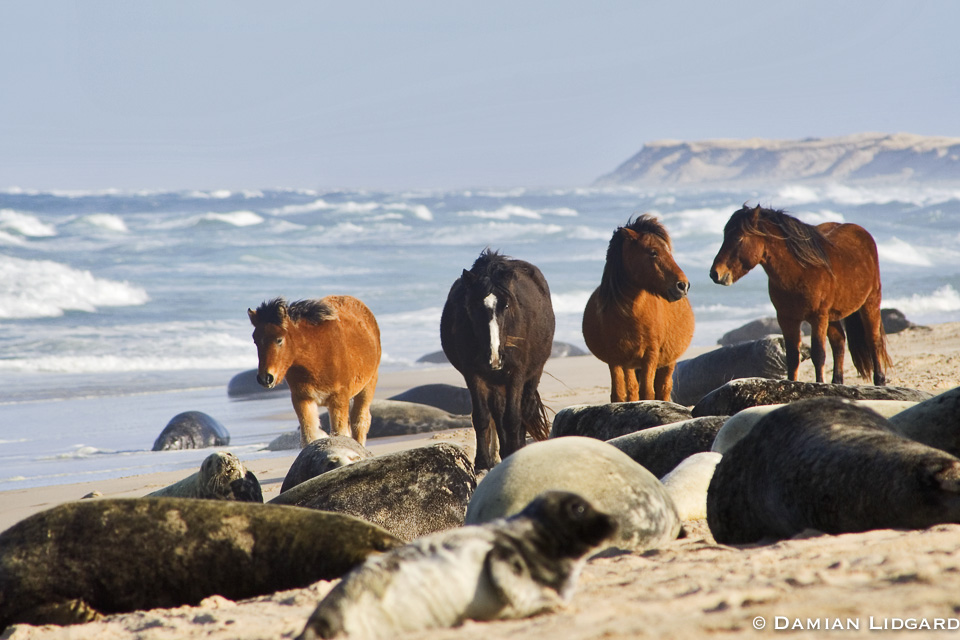(Originally published by The Plaid Zebra on 07/08/16)
I’m sorry. I don’t think I heard you right. Did you say there’s an island with feral horses just running around, doing horse things?
— Yeah, it’s freaking magical.
On a recent trip to Halifax, Nova Scotia I learned about Sable Island, the place where dreams really do come true. At least the dreams of a horse-loving maniac like myself.
Sable Island rests in the North Atlantic Ocean, 300km southeast of Halifax and 175km southeast of any piece of land. It’s been cleverly nicknamed the “Graveyard of the Atlantic” because for more than four centuries, hundreds of ships have found themselves shipwrecked along its unique crescent shaped shores, which are only 1.5km across and 40km long.

Image source: wikipedia.org
The island is famous because of the 500 feral horses living there. The horses are believed to be descendants of Acadian horses seized by the British during the Acadian expulsion between the 1750s-1760s. They survive off small freshwater ponds and marram (a type of grass) dotting the desolate landscape. Unique to the eastern side of the island in particular, Philip McLoughlin—a biology professor at the University of Saskatchewan—says the horses dig wells into the sand in order to access fresh drinking water.
They were only threatened with extinction in 1959 when the Canadian government debated “saving” them from the harsh environment and possibly turning most them into pet food. Luckily, Canadian children were having none of it, and through an old-fashioned letter writing campaign, convinced then-Prime Minister John Diefenbaker to pass a law to protect them instead.
There is still the question of whether or not the horses should be removed due to the fact that they are not a native species to the island and could therefore threaten the habitat for the other native species living there, such as seals and birds, including the Ipswich Sparrow which has no other known breeding ground. Martin Willison, a conservation biologist, believes the horses shouldn’t be removed because they’ve been there for hundreds of years. Willison argues, “This is a breed that is valuable, it’s important to the ecosystem as it exists right now.”

Today, the island is protected by Parks Canada, which only recently started to allow visitors. Catherine Bush, a writerfor the Globe and Mail, was one of the first visitors to step foot on the island through a nine-day, $2,395 USD expedition lead by Adventure Canada in 2014. After reveling in the island’s beauty, Bush lamented the few signs she saw of “human encroachment,” which came in the form of “dry-cleaning plastic” and a “crate of Gucci perfume” washed up on the shore.
Due to the fragile state of Sable Island, its location and the cost, it may not be a feasible place to visit for regular folks, unless you’re really determined. Luckily however, it isn’t the only place where horses roam freely. Visit this page for a list of places you can visit to satisfy your inner horse-maniac. Until you book that trip however, check out the video below to take a virtual stroll on Sable Island thanks to Adventure Canada.



April 26, 2017 at 7:56 pm
Good stuff! This would be really cool to visit, never knew anything like this existed. You’ve got my follow. Check out my comedy blog and give it a follow if you like it!
LikeLiked by 1 person
May 2, 2017 at 8:33 pm
Thanks! Yeah, I definitely want to go one day!
LikeLiked by 1 person